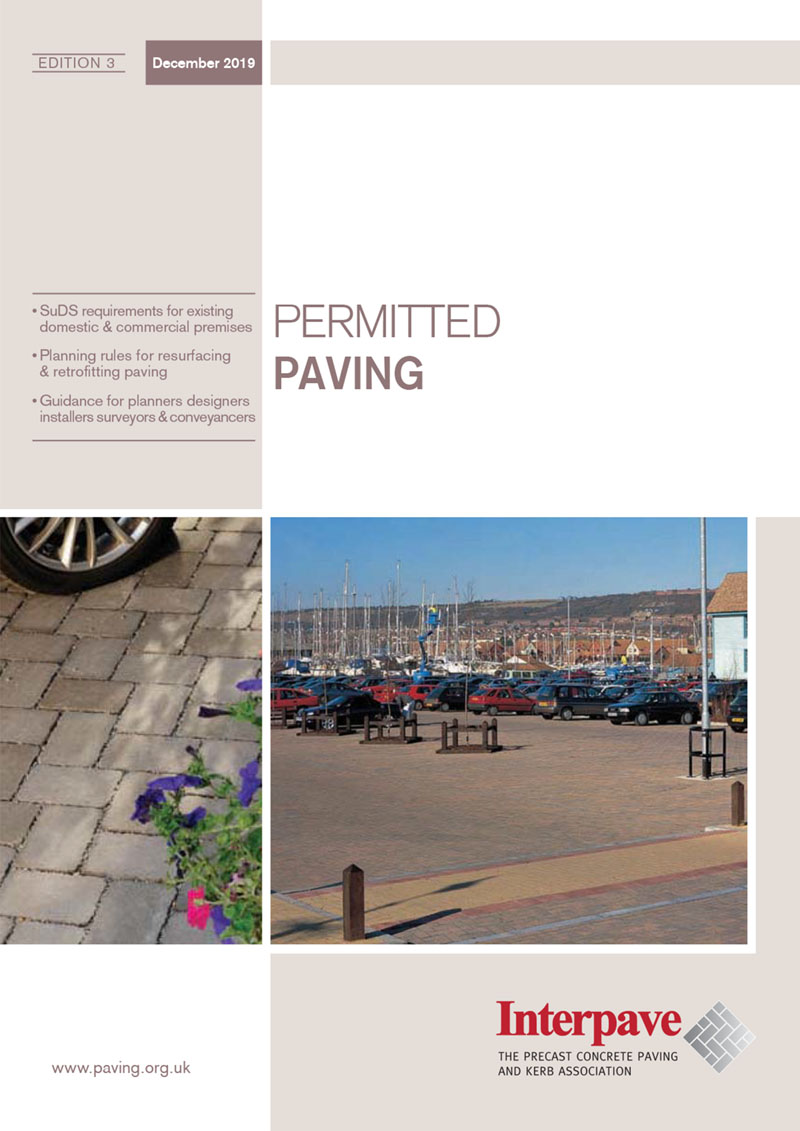Permitted Paving & Planning Requirements
2019 – another year of flooding around the UK – provided a timely reminder of the importance of sustainable drainage (SuDS). Although a requirement for most new developments, other planning measures encouraging SuDS also apply to paving around existing properties. They are explained in brand new editions of Interpave’s ‘Permitted Paving’ and ‘Paving for Rain’ guidelines, which are now available to download.
Originating from the government-backed Pitt Review of the 2007 summer floods, various requirements for use of SuDS affecting retrofitted new and replacement paving were put in place through changes to planning rules in England, Scotland and Wales some time ago. But the growing awareness of the importance of SuDS and permeable paving in the fight against flooding means increasingly robust enforcement by local authorities today.
Many planning authorities have already embraced SuDS and incorporated requirements for them in local policies being implemented now, impacting on planning applications. This stance is supported by the 2019 National Planning Policy Framework (NPPF). But, in addition to new developments, changes to planning ‘Permitted Development’ rules aim to apply SuDS techniques to new or replacement paving around existing homes and various non-domestic buildings.
Before these changes, paving anywhere in a garden related to a ‘dwellinghouse’ or within various non-residential properties, using any materials, was considered to be ‘permitted development’ – effectively, an automatic planning permission without needing a planning application.
For dwellings, the changes take away permitted development rights from new or replacement drives or other paving between a house and the street, unless it is permeable paving or drains water onto a permeable area within the property. Otherwise planning permission is now be needed before installing new, or replacing existing paving which is not SuDS compliant. With national and increasing local planning policies encouraging or requiring SuDS, such applications may well be rejected.
For industrial, warehouse, office and shop premises, similar changes take away permitted development rights from new or replacement paving on a property, unless it is permeable paving or drains water onto a permeable area within the curtilage of the property. Again, planning permission will be needed otherwise.
- More information for professionals can be found in the brand-new edition of Interpave’s ‘Permitted Paving’ guidelines.
- Straightforward design and construction guidance for homeowners and contractors installing domestic driveways (car traffic only) to comply with planning requirements is available in ‘Paving for Rain - Responsible rainwater management around the home’.


